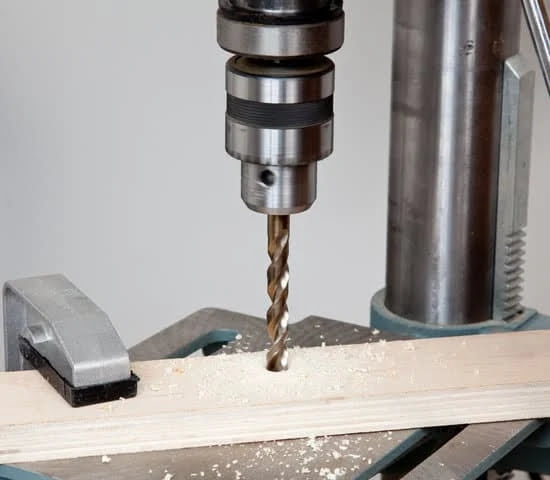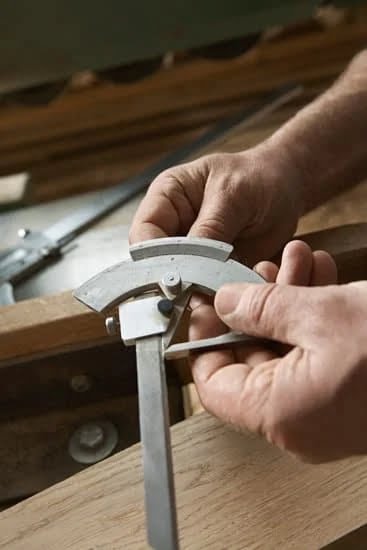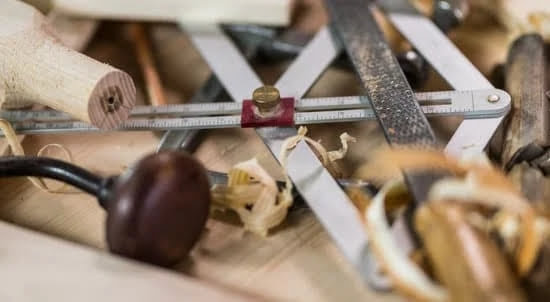Latest Woodworking Power Tools
In woodworking, there are many types of power tools that can be used. Different tools are used for different purposes, and it is important to know which tools are the best for the job.
One of the most important tools for woodworking is a power saw. Power saws can be used for a variety of purposes, such as cutting boards, trimming lumber, and making moldings. There are many different types of power saws available, including circular saws, miter saws, and table saws.
Circular saws are the most common type of power saw. They are typically used for cutting boards and lumber. Circular saws are available in different sizes, and they can be used for a variety of different cuts.
Miter saws are used for making precise cuts at angles. They are typically used for making trim and moldings, and they can be used for a variety of different cuts.
Table saws are used for cutting large pieces of lumber. They are typically used for making straight cuts, and they can be used for a variety of different cuts.
Another important woodworking power tool is a drill. Drills can be used for a variety of purposes, such as drilling holes, driving screws, and sanding. Drills are available in different sizes, and they can be used for a variety of different applications.
One of the most important things to consider when choosing a drill is the type of drill bit that is needed. There are many different types of drill bits available, including twist drills, spade drills, and Forstner drills.
Twist drills are the most common type of drill bit. They are typically used for drilling holes in wood, metal, and plastic.
Spade drills are used for drilling large holes in wood. They are typically used for drilling holes in lumber and beams.
Forstner drills are used for drilling precision holes in wood. They are typically used for drilling holes in door hinges and cabinet knobs.
Another important woodworking power tool is a router. Routers can be used for a variety of purposes, such as routing grooves, shaping edges, and mortising. Routers are available in different sizes, and they can be used for a variety of different applications.
One of the most important things to consider when choosing a router is the type of router bit that is needed. There are many different types of router bits available, including straight bits, spiral bits, and V-groove bits.
Straight bits are the most common type of router bit. They are used for routing grooves, shaping edges, and mortising.
Spiral bits are used for routing curved edges and profiles.
V-groove bits are used for routing V-shaped grooves.
Another important woodworking power tool is a sander. Sanders can be used for a variety of purposes, such as sanding wood, metal, and plastic. Sanders are available in different sizes, and they can be used for a variety of different applications.
One of the most important things to consider when choosing a sander is the type of sandpaper that is needed. There are many different types of sandpaper available, including sanding discs, sanding belts, and sanding pads.
Sanding discs are used for sanding flat surfaces.
Sanding belts are used for sanding curved surfaces.
Sanding pads are used for sanding contoured surfaces.
Import Woodworking Hand Tools
into Canada
Are you looking to import woodworking hand tools into Canada? If so, you’ve come to the right place. At Canada Customs Broker, we can help you navigate the complex process of importing tools into Canada.
There are a few things you need to know before you import woodworking hand tools into Canada. First, you need to determine the classification of your tools. The tariff code for woodworking hand tools is 8466.91.00.
Next, you need to determine the value of your tools. The value of your tools will be used to determine the duties and taxes you will need to pay.
Finally, you need to ensure that your tools meet the requirements of the Canada Border Services Agency (CBSA). Your tools must be properly packed and labeled, and they must be accompanied by a commercial invoice.
If you’re not sure how to navigate the process of importing woodworking hand tools into Canada, contact the experts at Canada Customs Broker. We can help you every step of the way, and we’ll make sure that your tools arrive safely and securely at your destination.
Homemade Woodworking Hand Tools Pdf
Plans
There are a few different hand tools that woodworkers use on a regular basis. While most of these tools come in a kit, there are a few that are essential for any woodworker.
Chisels: Chisels are used for a variety of purposes, from cutting joints to cleaning up the edges of a board. There are different types of chisels, but the most common are the flat chisel and the beveled chisel.
Knives: Knives are used for a variety of tasks, from roughing out a piece of wood to cutting a straight line. There are different types of knives, but the most common are the carving knife and the utility knife.
Rasps: Rasps are used for shaping wood, especially in the early stages of the process. There are different types of rasps, but the most common are the flat rasp and the half-round rasp.
Saws: Saws are used for cutting wood, and there are different types of saws for different purposes. The most common saws are the coping saw, the jigsaw, and the miter saw.
Screwdrivers: Screwdrivers are used for driving screws. There are different types of screwdrivers, but the most common are the Phillips screwdriver and the slotted screwdriver.
Files: Files are used for shaping and smoothing wood. There are different types of files, but the most common are the bastard file and the rasp file.
Hammer: A hammer is used for pounding nails and driving screws. The most common hammer is the claw hammer.
Chisels
Chisels are one of the most versatile hand tools a woodworker can have in his or her arsenal. There are different types of chisels, but the most common are the flat chisel and the beveled chisel.
The flat chisel is the most common type of chisel. It is used for a variety of purposes, from cutting joints to cleaning up the edges of a board. It is also used for paring, which is the process of shaving off small amounts of wood from a piece of wood.
The beveled chisel is used for cutting joints. It has a beveled edge that allows the woodworker to make a clean cut in the joint. Beveled chisels are also used for mortising, which is the process of cutting a square hole in a piece of wood.
Knives
Knives are another essential hand tool for a woodworker. There are different types of knives, but the most common are the carving knife and the utility knife.
The carving knife is used for carving wood, especially in the early stages of the process. It is a sharp, pointed knife that is used for making detailed cuts.
The utility knife is used for a variety of tasks, from roughing out a piece of wood to cutting a straight line. It is a sharp, pointed knife that is used for general purpose cutting.
Rasps
Rasps are another essential hand tool for a woodworker. There are different types of rasps, but the most common are the flat rasp and the half-round rasp.
The flat rasp is used for shaping wood, especially in the early stages of the process. It is a flat, rectangular file that is used for shaping wood.
The half-round rasp is used for shaping wood. It is a half-round file that is used for shaping the edges of a board.
Saws
Saws are another essential hand tool for a woodworker. There are different types of saws for different purposes. The most common saws are the coping saw, the jigsaw, and the miter saw.
The coping saw is used for cutting curves. It is a small, narrow saw that has a thin blade that can be bent to form curves.
The jigsaw is used for cutting straight lines and curves. It is a portable saw that has a reciprocating blade that can be used for a variety of purposes.
The miter saw is used for cutting angles. It is a stationary saw that has a circular saw blade that can be used to cut angles.
Screwdrivers
Screwdrivers are another essential hand tool for a woodworker. There are different types of screwdrivers, but the most common are the Phillips screwdriver and the slotted screwdriver.
The Phillips screwdriver is used for driving Phillips screws. It is a screwdriver that has a cross-shaped head that is used for driving Phillips screws.
The slotted screwdriver is used for driving slotted screws. It is a screwdriver that has a flat head that is used for driving slotted screws.
Files
Files are another essential hand tool for a woodworker. There are different types of files, but the most common are the bastard file and the rasp file.
The bastard file is used for shaping and smoothing wood. It is a file that has a rough surface that is used for shaping wood.
The rasp file is used for shaping and smoothing wood. It is a file that has a smooth surface that is used for shaping wood.
Freud Woodworking Tooling
LLC is the leading distributor of Freud woodworking tooling in the United States. We carry a wide range of Freud woodworking tools, including saw blades, router bits, and more. Our experienced staff can help you find the right Freud woodworking tools for your needs, and our fast shipping means you’ll have your tools in no time.
Freud Woodworking Tooling LLC was founded in 2001 by a group of experienced woodworkers and tooling experts. We know woodworking, and we know tooling. We carry only the highest quality Freud woodworking tools, and we stand behind our products with our 100% satisfaction guarantee.
If you’re looking for the best in Freud woodworking tools, you need look no further than Freud Woodworking Tooling LLC. We carry a wide range of tools for all your woodworking needs, and our experienced staff can help you find the right tool for the job. We offer fast shipping, so you’ll have your tools in no time.
Freud Woodworking Tooling LLC: the best in Freud woodworking tools.
Fine Woodworking Tools And Shops 2012
There is a lot of discussion these days about the role of digital tools in woodworking, and how the use of digital devices is changing the way woodworkers work. I’d like to take a step back and talk about the tools that have been with us for centuries, and how their use has changed over time.
The first woodworking tools were simple objects like chisels, axes, and saws. With these tools, woodworkers could shape wood into simple objects like bowls and spoons. The use of these tools was limited by the fact that the woodworker had to be able to see what he was doing, and he had to be able to reach the workpiece.
The introduction of the drill in the 18th century allowed woodworkers to make holes in wood without having to see what they were doing. This allowed them to make more complex objects, like chairs and tables. The drill also allowed them to work with wood that was too large to fit in the workshop.
The use of power tools has allowed woodworkers to work with wood in ways that were not possible before. The table saw, for example, allows woodworkers to cut boards to the exact size they need, without having to measure and mark the board. The jointer allows them to make boards that are perfectly straight. The router allows them to make complex shapes in wood.
The use of digital tools has also changed the way woodworkers work. The use of CAD software, for example, allows woodworkers to design complex projects on the computer, and then to print out the plans for the project. This allows them to work on projects that are too large to fit in the workshop.
The use of digital tools has also allowed woodworkers to share their projects with other woodworkers all over the world. The Internet has allowed woodworkers to exchange ideas and to learn from each other.
The use of digital tools has changed the way woodworkers work, but the use of traditional tools has also changed over time. The use of power tools has allowed woodworkers to do things that were not possible before. The use of digital tools has allowed woodworkers to share their projects with other woodworkers all over the world. The use of traditional tools has also changed over time, and the use of traditional tools will continue to change in the future.

Hi everyone! I’m a woodworker and blogger, and this is my woodworking blog. In my blog, I share tips and tricks for woodworkers of all skill levels, as well as project ideas that you can try yourself.





